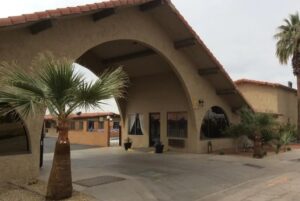Does the Argument Behind Anaheim’s Luxury Hotel Subsidy Plan Hold Water?
Does the Argument Behind Anaheim’s Luxury Hotel Subsidy Plan Hold Water?
Voice of OC
06/30/15
By Adam Elmahrek
http://voiceofoc.org/2015/06/does-the-argument-behind-anaheims-luxury-hotel-tax-subsidy-plan-hold-water/
Earlier this month, in the latest iteration of hotel subsidies in Anaheim, the City Council majority approved a policy that calls for the city to kick back 70 percent of room-tax revenue to developers of luxury hotels based on the premise that high-end hotels generate more tax revenue than those in lower tiers.
But not everyone buys this argument, including Anaheim Mayor Tom Tait, the owner of a large hotel chain, and a hotel-financing expert.
Tait was the first to dispute the reasoning, saying it comes down to simple arithmetic. When the Council approved the policy at its June 16th meeting, the mayor pointed out that while the city currently receives, on average, $15.33 in revenue per room night from a three-diamond hotel; under the subsidy policy, the city would only get $4.25 per room night from a four-diamond hotel.
“Why would we do this?” Tait said.
City staff — and a city-hired consultant — say Tait’s basic math problem fails to take into account a more complex reality. Their reasoning goes like this:
A four-diamond hotel is constructed with steel frames and can therefore hold many more rooms than a three-diamond. The additional rooms and the higher rates mean a larger room-tax base. Also, the presence of a luxury hotel allows surrounding hotels to hike their rates, generating even more room-tax revenue.
Throw in the larger property tax and sales tax returns that come with a nicer hotel, and you’ve got a better deal for the city, even when it only keeps 10 percent of the room-tax.
As living proof of their argument, subsidy proponents point to the JW Marriott at the L.A. Live entertainment district in downtown Los Angeles, which benefits from a tax subsidy deal that allows the developer to keep up to $270 million in room-tax revenues through 2035.
The opening of JW Marriott in 2010 increased the average daily rate for hotels in the area, according to Bruce Baltin, senior vice president at PKF Consulting, which the city hired to analyze its hotel tax subsidy policies.
Baltin claims a database kept by PKF Consulting shows that in the top-tier of hotels, which is where the JW Marriott competes, each individual hotel’s room rate increased sharply. However, he wouldn’t share the hotel-by-hotel figures, saying that doing so would violate the hotels’ confidentiality in providing their numbers.
Yet Alan Reay, president of Irvine-based Atlas Hospitality Group, which is in the business of hotel financing, says there are some basic flaws with this logic.
For one, Reay said, it’s something of an apples-to-oranges comparison because the tax subsidy was awarded to build the JW Marriott due to a shortage of hotels near the city’s convention center, not just to attract high-end guests, which is Anaheim’s approach.
Furthermore, revenue-per-room increased across Los Angeles County between 2010 and 2011, not just in downtown LA., Reay said. Also, the average rate in the downtown LA area increased because the rate at the 878-room JW Marriott’s is much higher than the surrounding hotels.
Reay likened it to purchasing a Bentley car when you already own a Mini-Cooper. When you average the value between the two cars, of course that’s a higher number. But it doesn’t mean the value of your Mini-Cooper increased.
“I just don’t see one hotel making that big of an impact,” Reay said, adding that too many other factors come into play to determine whether a single hotel could have the effect the city is looking for.
Baltin acknowledges that room rates increased across the board. But what makes the addition of the JW Marriott unique is that competitor hotels didn’t reduce their rates to compete, which is usually what happens when a large new luxury hotel opens up, he said.
“Normally, when a thousand-room hotel opens in a market like downtown LA, in reaction the other hotels will have to lower their rates in competition,” Baltin said.
That counterintuitive trend shows that the JW Marriott’s opening had a positive effect, according to Baltin.
Another question raised by subsidy opponents is whether a subsidy is even needed to spur luxury hotel development.
The current consensus among financing experts is that the hotel market, while typically the last to recover after an economic downturn, is at or nearing its peak. If a luxury hotel can’t secure financing in this market, that’s probably because Anaheim is the wrong location for it and the well-heeled guests will still choose a luxury hotel near the beach over Anaheim, Reay said.
Sean Gulian, real estate analyst at the Pittsburgh-based capital markets firm HFF, Inc., said the hotel industry is still on a “steep climb” but acknowledged that the market has improved. He doesn’t think a luxury hotel could be financed and built in Anaheim without subsidies yet, but that in the “near future” that will probably change.
“I think that the market will continue to climb so in the near future it probably won’t be” necessary to secure tax subsidies for a luxury hotel, Gulian said. “For the amount of progress hotels have made thus far, it’s too early to say.”
Baltin argues that the demand for a luxury hotel does exist. The problem for Anaheim is that it make more financial sense for a developer to build a lower-tier hotel. That’s where the subsidy comes into play.
“The demand is there for the hotels, Baltin said. “But by the same token, the economics of building the hotels without the subsidy are less desirable than building a self service or extended stay hotel.”


